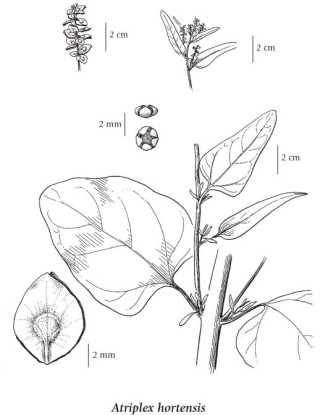E-Flora BC: Electronic Atlas of the Flora of British Columbia
Atriplex hortensis L.
garden orache (French spinach) Amaranthaceae (Amaranth family) (Previously in Chenopodiaceae) Introduction to Vascular Plants
|
|||||||||||||||||||
